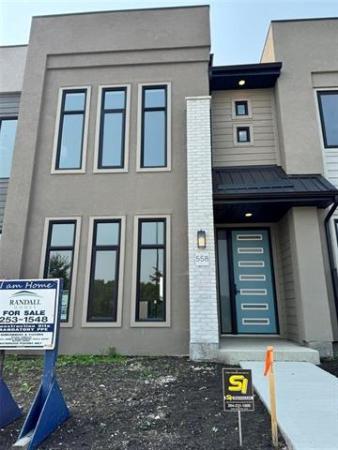QUESTION: I am sitting here watching a brand-new home being backfilled without weeping tile. I live quite close to the Red River, about 500 yards away. It is a concrete foundation and they took the care to wrap the foundation with Delta Wrap. I'm not in the construction business, but I am pretty sure that even with the Delta Wrap you still need weeping tile. The soil is mainly made up of silt and clay here. All the homes in this area have a sump pit and sump pumps. My question is what will happen to the home's foundation if it is left like this?
-- Kyle Galbraith, e-mail
ANSWER: As I was reviewing questions for this week's column, your timely e-mail inquiry arrived and prompted a quick response, due to the shocking nature of your discovery. I would be very surprised if you are correct in your observations that no weeping tile were installed, but it wouldn't be beyond belief. I will offer possible worst-case scenarios for the new foundation if weeping tiles indeed are missing, while describing the function of this system in new home construction.
Modern subsoil drainage systems, commonly called weeping tiles, are critical components in new homes, particularly in the Red River Valley. Our wonderful southern Manitoba soil is primarily composed of expansive clay, which is among the worst conditions for foundation construction in North America because it can significantly expand and contract with changes in moisture levels.
This is compounded by our temperature extremes, which can range more than 70 degrees Celsius between summer and winter. This large range can cause even more expansion and shrinkage of the soil due to drying in the summer and frost heaving from frozen moisture over the winter.
Weeping-tile drainage systems in new homes are composed of long, corrugated plastic pipes installed near the bottom of the foundation and footings. These long pipes are perforated to collect excess ground water, which is channeled to non-perforated sections of similar pipe underneath the concrete floor slab in the basement or in the crawlspace. These interior sections are sloped downward toward a sump pit, where they terminate. The interior piping typically runs through the footings and connects to the exterior drainage tiles, which run around the entire perimeter of the foundation.
The exterior pipes are often covered with a fabric "sock" that prevents blockage with fine particles from the soil. Drainage stone may also be placed over the weeping tile for a portion of the backfill to help collection of soil moisture. Once complete, backfilling is typically done by replacing a portion of the clay soil that has been excavated for the foundation, as you have observed.
If everything is done correctly, the weeping tile will collect excessive groundwater that may collect around the foundation after heavy rains and the spring thaw. This water will enter the sump pit, where it will be pumped back out near the top of the foundation and distributed away from the house through an extension hose attached to the sump discharge piping.
This system is very important because it will prevent oversaturation of the soil adjacent to the foundation. If this soil remains too wet, it can expand significantly and push excessively on the foundation. In the worst cases, this hydrostatic pressure can cause the foundation to crack and bow inward. In minor cases, it can cause the excess moisture to enter the foundation through small fissures or openings, creating a damp basement.
You are correct that the membrane applied to the exterior of the foundation may prevent seepage due to hydrostatic pressure, but it will not prevent cracking and physical damage to the foundation from expansive clay. Only a properly installed weeping-tile and sump-pump system will ensure that this is not likely to occur. The inclusion of this system is required on full-height foundations, but may not be installed on short, grade-beam-style foundations like those found on many attached garages.
Considering that the dimpled membrane you have seen installed is considered an upgrade over traditional bitumen damp-proofing methods, I would be very surprised if weeping-tile installation was missed. It's possible that the exterior drainage-tile system was installed and covered with stone or a small amount of soil and was not visible to you prior to backfilling. I would watch to see if the interior sections of piping and the sump pit are installed in the next few days or weeks in the basement, which may answer your question.
If you are still suspicious, you could inquire with the building officials or inspection division responsible in your municipality. They should be able to verify that a foundation and drainage-tile inspection was completed before backfilling was allowed. If this was not done, the only way to remedy the situation is to dig up the newly installed fill and install the proper drainage tile piping, as required.
Ari Marantz is the owner of Trained Eye Home Inspection Ltd. and the President of the Canadian Association of Home & Property Inspectors - Manitoba (www.cahpi.mb.ca). Questions can be e-mailed or sent to: Ask The Inspector, P. O. Box 69021, #110-2025 Corydon Ave., Winnipeg, MB. R3P 2G9. Ari can be reached at (204) 291-5358 or check out his website at www.trainedeye.ca.
trainedeye@iname.com



